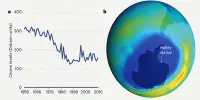Over the last century, Germany’s plant world has produced more losers than winners. While the frequencies and abundances of many species have decreased, they have increased significantly in others. As a result, gains and losses have been distributed very unevenly. As reported in Nature by a team led by Martin Luther University Halle-Wittenberg (MLU) and the German Centre for Integrative Biodiversity Research (iDiv), it indicates an overall, large-scale loss of biodiversity.
While global biodiversity is being lost at an alarming rate, many studies show no significant decreases in animal and plant species numbers at the local level. “However, this does not mean that the developments are not concerning,” warns Professor Helge Bruelheide, an ecologist at MLU. After all, it also depends on the species. For example, when survival artists adapted to peatlands or dry grasslands are displaced by common plants, the total number of species often remains the same. However, diversity is still being lost because the once-distinctive vegetation of different habitats is becoming increasingly similar.
The team led by MLU examined a plethora of local studies to determine the strength of this trend in Germany. Several experts provided data from over 7,700 plots where plant populations were surveyed multiple times between 1927 and 2020. These studies, some of which have not previously been published, cover a wide range of habitats and provide data on nearly 1,800 plant species. This includes roughly half of all vascular plant species found in Germany.
“Such time series can provide very valuable information,” explains Dr. Ute Jandt from MLU. This is because very precise botanical censuses can be conducted in plots that are often only ten or twenty square metres in size. “: It is highly unlikely that plants disappear or reappear unnoticed in such plots,” Jandt adds.
Such time series can provide very valuable information. This is because very precise botanical censuses can be conducted in plots that are often only ten or twenty square metres in size. It is highly unlikely that plants disappear or reappear unnoticed in such plots.
Dr. Ute Jandt
A data analysis reveals a negative trend in abundance for 1,011 of the species studied and a positive trend for 719. In other words, over the last century, there have been 41% more losers than winners. “What’s more surprising is that the losses were much more evenly distributed,” Bruelheide says.
The Gini coefficient, which is commonly used to analyze the distribution of income and property, was used by the team to discover this. The index, for example, shows that in many countries around the world, a small number of rich people are getting richer while the vast majority of poor people are getting poorer. Germany’s plant world is seeing a very similar trend: the losses are more evenly distributed among the many losers, while the gains are concentrated among fewer winners.

The latter group includes, for instance, the black cherry and the northern red oak, both of which originated in North America but have now also taken over many forests in Germany. The frost-sensitive European holly has also gained more and more ground in the course of climate change. The large camp of losers, on the other hand, consists of many types of agricultural weeds such as the cornflower, meadow species such as the small scabious, and wetland specialists such as the devil’s-bit.
According to the study, the strongest imbalance between gains and losses occurred between the late 1960s and the early 21st century. “This phase started with the strong intensification of land use. Since then, however, there have been successful nature conservation measures that have weakened the still ongoing negative trend to a certain degree,” says Bruelheide.
Nobody knows if this holds true in other parts of the world. As a result, the team advocates for the collection and analysis of similar datasets from around the world. This unequal distribution of gains and losses can be interpreted as an early warning sign of changes in biodiversity that will eventually lead to species extinction.
The new study is the result of the iDiv-led project “sMon — Biodiversity Trends in Germany.” Data on the evolution of biodiversity in Germany are being collected and analyzed as part of this initiative. Researchers are collaborating with public institutions and environmentalists to achieve this goal.














